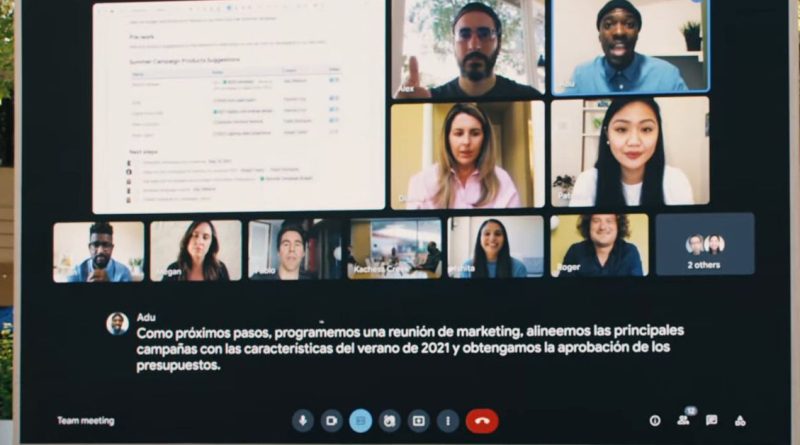Google is reinventing Docs to fight a two-front war
Let’s talk about some big changes announced to the platform where many of us get a lot of work done: Google Workspace, home to the suite of cloud-based tools that includes Docs.
The relative stagnation of Docs in a rapidly evolving world of productivity tools has been an ongoing fascination for me. When I’m writing for myself, I use slick, modern tools like Notion, Bear, and (more recently) Substack. But when I write for others, it’s most often in Docs, which launched 15 years ago and looks more or less the same as it has since the late 2000s.
Create a new document in any other digital writing tool and you see an infinite canvas; in Docs you see a picture of an 8.5 x 11-inch sheet of paper, since Google assumes that any document you create is going to be printed eventually. On paper. To me, the skeuomorphism of Docs has long been a sign that Google has fallen behind the times.
And so I was happy to learn, at long last, that’s changing. Here’s Dieter:
Ultimately, Google is working to make every single part of its Workspace suite of apps interconnected. You’ll be able to start a Meet video chat directly within Docs or share your Doc directly into a Meet call with a button in the doc. All of that integration will be useful, but it also has the benefit (for Google) of perhaps enticing users away from using competing products like Zoom or Slack and instead using Google’s cohesive suite.
There is a smattering of other small updates: emoji reactions in Google Docs in addition to traditional comments, a new timeline view in Google Sheets for improved project management, and best of all: a new “pageless” view in Google Docs that does away with the assumption that your document is meant for an 8.5” x 11” piece of paper. It dynamically resizes the doc to the size of your web browser the way a web app ought to.
The changes are part of a suite of updates to Workspace that, I would argue, represent the biggest set of changes to Docs in more than ten years. While the shift away from printed pages is perhaps the most symbolic move here, the larger idea is to create more dynamic, interactive documents that are integrated with other Google products.
As Dieter notes, this will offer a lot of practical convenience for average users: starting quick video chats from inside a document; creating polls to help colleagues make quick decisions; and quickly assigning tasks to colleagues via the @-mentions that are already standard across most enterprise software. Together, they create what Google is calling a “smart canvas” in Workspace, built on individual objects called “smart chips.”
Notably, smart chips can include file formats other than Google’s own — you’ll be able to embed document previews from Microsoft Office docs, for example. Modern enterprise software is built on these kinds of useful integrations — Slack raced out to an early lead mostly because it let you monitor events across an entire suite of third-party products, including Google’s — but they have been next to nowhere inside Docs.
For casual users of Docs, the entire conversation can end here: Google is making a series of minor helpful changes to Docs, making the overall experience 10 or 15 percent better for you. Great! I wish every product I used got 10 to 15 percent better every year.
At the same time, Google’s incremental approach to improving Docs also reveals a dilemma that the company often faces when trying to improve its most-used products. Introducing lots of changes is appealing to designers, developers, and the tech enthusiasts like me that they serve, but often causes average users to revolt. And Google is so big that even well-funded startups with great ideas can fail to gain traction. The result is that the safest path at Google and other big companies is almost always to change things very little. The more users the product has — and Workspace has hundreds of millions of users — the more true this generally is.
Just look at Gmail, which has changed relatively little over the past decade. The company’s noble attempt to build a new email experience from scratch, a standalone product called Inbox, won praise from reviewers for its more innovative features. But it failed to get much traction and was eventually ended. Gmail is still thriving in large part due to indifference from the startup world, which sees a daunting challenge in trying to build a new email service from scratch. But it’s telling that when Basecamp tried last year with its email service Hey, it was overflowing with novel ideas.
Google’s dilemma with Workplace is even more acute, since the company is fighting a two-front war. On one side you have Microsoft, the original target that the products once called G Suite were designed to antagonize. (That project was a tremendous success, and ultimately dropkicked Microsoft into cloud-based subscriptions for Office five years later.) A huge part of Google’s attention remains occupied by the picayune needs of current and former Office users and can enforce a kind of slow, linear progression in the product roadmap.
On the other hand, though, you have the upstarts: beautiful, feature-rich, fast-iterating products like Notion, Coda, and Airtable. What these products lack in the lowest-common-denominator simplicity of Google Workspace is more than made up for in power and flexibility. The learning curve is real — I think I tinkered with Notion for six months before I figured out how it really fit in my life, which isn’t much of an endorsement — but before the Google I/O announcements, using Docs has come to feel like going back in time.
But unlike new email apps, productivity tools are getting real traction. Coda raised money at a valuation of $600 million last year. Notion raised $50 million at the start of the pandemic, and by April 2020 was valued at $2 billion. As of March, the spreadsheet-based Airtable was valued at $5.77 billion.
It’s clear that these startups’ ability to move fast is drawing in new users at a rapid clip. And because they aren’t serving legacy user bases in the millions, they can afford to have a learning curve. Coda CEO Shishir Mehrotra — himself a former Googler, having run product at YouTube — told me Docs could only afford to evolve so much.
“I think they’re gonna get stuck at what I call the Dropbox Paper point,” Mehrotra said, referring to the file-storage company’s tepid attempt to improve digital documents. “Which is like, there’s like a set of things you can do without fundamentally changing the paradigm. And it’ll be good — I think a lot of people will love @-mentions and so on. They’re clearly trying to cherry-pick attractive features — they highlighted voting and reactions, which are two of our most popular features. They’re clearly trying to pull individual things in. But if you don’t want to fundamentally change the product, there’s only so far you can go.”
Toward the end of the day, I hopped on a Meet with Javier Soltero, who has run Google Workspace since October 2019. Soltero has seen both sides of the tech giant / startup divide — he founded the great mobile email app Acompli, sold it to Microsoft, and then successfully transformed it into the mobile Outlook app during a productive stint in the Office organization.
Soltero took exception to my suggestion that the Workplace team hasn’t been shipping lately — he pointed to the roll-out of AI-assisted “smart compose” features over the past couple years, for example. But he acknowledged that the company had a lot of infrastructure work to do — free customers and paid customers have been using different versions of the apps, for example, and Google is spending a lot of time migrating them to a more similar set of features.
Ultimately, though, Soltero told me what I wanted to hear: that the changes would herald the arrival of a world where Docs would start to iterate faster.
“I’m excited because today actually represents a big step toward continued acceleration,” he told me. “It’s not to say that we’re going to get everything right, or that everything’s going to be an earth-shattering, Marvin the Martian-style kaboom, but we are guided, I think, by the right set of things as a team. And I’m seeing the organization get really excited.”
Of course, Coda and its peers are also accelerating. And despite the welcome moves, Google still has a lot of catching up to do.
This column was co-published with Platformer, a daily newsletter about Big Tech and democracy.




